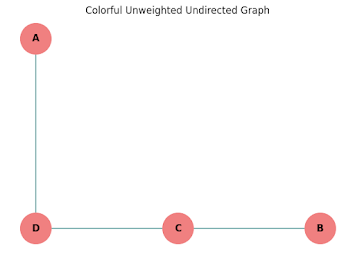Prim's Algorithm
Prim's Algorithm: Building the Cheapest Network
Purpose:
Prim’s Algorithm is used to find the Minimum Spanning Tree (MST) of a connected, weighted, undirected graph.
It connects all vertices with the minimum total edge weight and no cycles.
Imagine you're designing a water pipeline to connect several houses. You want to use the least amount of pipe possible. Prim's Algorithm helps you find the shortest network to connect everything.
What Is Prim's Algorithm? (The Definition)
Prim's Algorithm is a way to find the shortest set of connections between points in a network. It starts with one point and adds the closest points until everything is connected, without creating any loops. Prims algorithm and Kruskal algorithm are based on Minimum Spanning Tree. So, we will see what is minimum spanning tree.
What is MST (Minimum Spanning Tree)?
An MST or Minimum Spanning Tree is a special kind of subgraph in a connected, weighted, undirected graph.
It connects all the vertices together with:
-
✅ The minimum possible total edge weight
-
✅ No cycles
-
✅ Exactly (V - 1) edges, where V = number of vertices
How Does It Work? (The Explanation)
- Start Anywhere: Pick any point to begin.
- Find the Shortest Link: Look at all the connections from the points you've already included. Choose the shortest connection to a point you haven't included yet.
- Add the Link: Add that new point and the connection to your network.
- Repeat: Keep finding the shortest link and adding points until all points are connected.
Example: Connecting Houses with Pipes
Let's say we have houses A, B, C, and D, and the numbers are the lengths of pipes needed:
Step 1: Start at House A.
Our network starts with just house A.
Step 2: Find the Shortest Link.
- A is connected to B (length 5) and D (length 2).
- The shortest is A to D (length 2).
We add D and the connection A-D to our network.
A
|
D
Step 3: Find the Shortest Link (Again).
- A is connected to B (length 5).
- D is connected to C (length 4).
- The shortest is D to C (length 4).
We add C and the connection D-C to our network.
A
|
D ----- C
Step 4: Find the Shortest Link (Last One).
- A is connected to B (length 5).
- C is connected to B (length 3).
- The shortest is C to B (length 3).
We add B and the connection C-B to our network.
Step 5: We're Done!
All houses are connected.
The total length of pipe used is 2 + 4 + 3 = 9.
Why It's Useful:
It helps build the cheapest possible network for things like water pipes, roads, or computer cables.
Simple Takeaway:
Start anywhere, connect the closest thing, and keep going until everything is connected.
Feel free to comment


Comments
Post a Comment